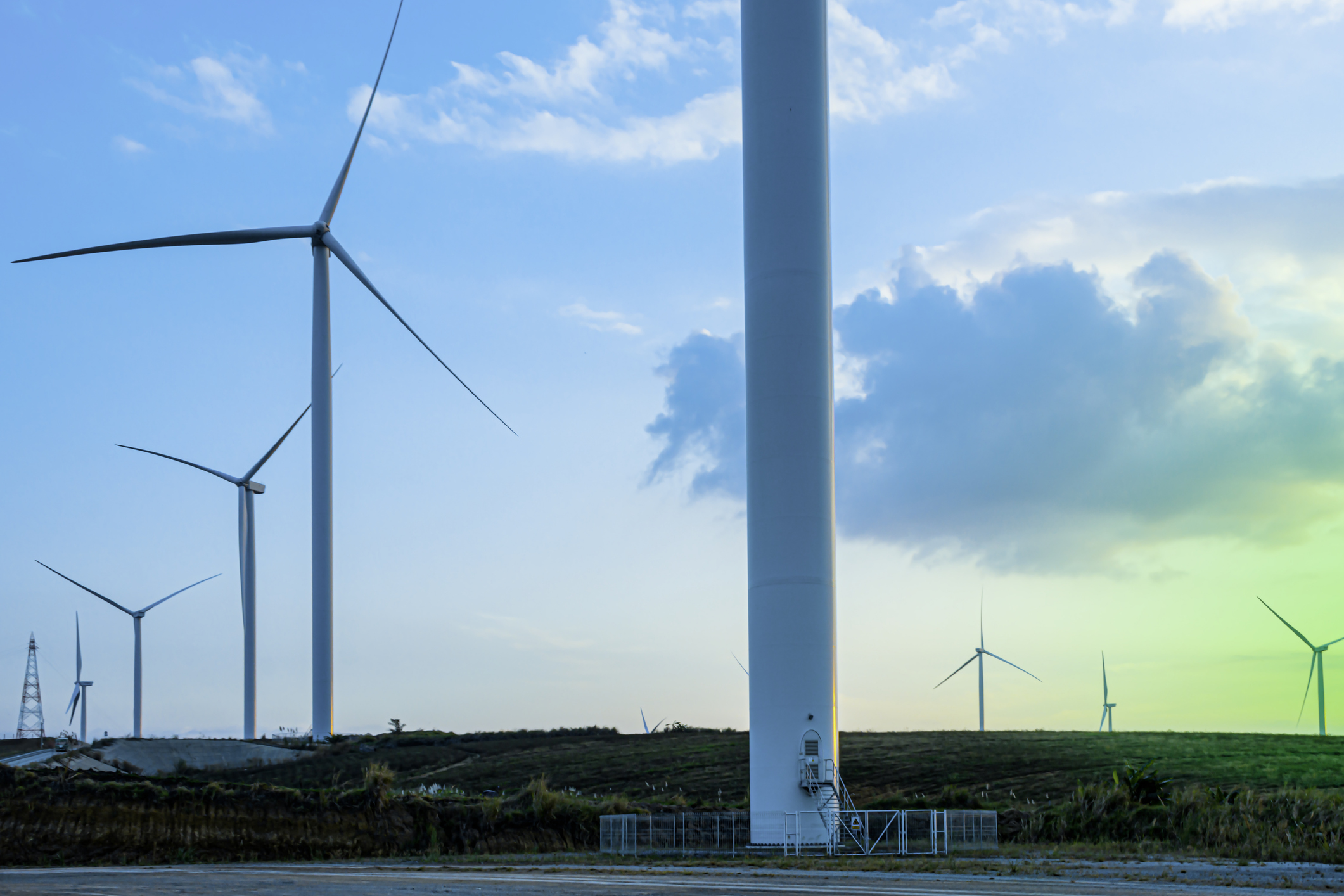Transitioning to cleaner energy sources can reduce air pollution, leading to improved public health outcomes and lower health care costs.
Decarbonization aims to limit the amount of harmful gases released into the atmosphere. This process helps slow down global warming and its effects on the environment.
Decarbonization presents a significant opportunity for organizations to reduce carbon emissions, lower operational costs, enhance their reputations and future-proof operations against changing regulations and consumer preferences. However, the complexities and nuances of decarbonization strategies, technologies and implementation processes can be daunting, especially when you have unique challenges facing your specific industry.
Key considerations have traditionally revolved around affordability, reliability and security. Today, solutions need to be more intuitive. In this guide, we’ll explain why decarbonization is important, explore how it can benefit businesses and the environment, and examine how you can implement sustainable practices to stay competitive and meet evolving decarbonization goals.
What Is Decarbonization?
Decarbonization can be part of any process implemented to reduce carbon dioxide (CO2) and other greenhouse gas emissions. The burning of fossil fuels and other industrial processes are the main producers of CO2, although deforestation, soil degradation and land clearance also contribute to these emissions.
According to the International Energy Agency, the energy sector is responsible for around 75% of greenhouse gas emissions. Decarbonization is essential to limit global warming to 1.5 degrees Celsius — 2.7 degrees Fahrenheit — per the 2015 Paris Agreement.
While CO2 is a natural part of the atmosphere, it accounts for around 80% of all greenhouse gas emissions from human activities in the United States. The eventual goal of decarbonization is to eliminate CO2 emissions resulting from human activity and ultimately reach net zero emissions by 2050.
It’s important to note that achieving net zero or carbon neutrality is related to decarbonization, but they’re different in scale.
- Decarbonization is a process that involves shifting away from fossil-fuel-based energy sources and moving toward cleaner alternatives like renewable energy. The ultimate aim is to lower all industries’ carbon footprints to mitigate the impact of greenhouse gases on the environment.
- Carbon neutrality is achieved when an entity’s net carbon emissions are balanced by removing an equivalent amount of CO2 from the atmosphere. This balance can be attained through different measures where emissions are compensated for by investing in projects that reduce or remove greenhouse gases elsewhere.
- Net zero is the state where the amount of greenhouse gases emitted into the atmosphere equals the amount removed. This process involves reducing emissions as much as possible and offsetting any remaining emissions through other actions like carbon capture or reforestation.
Why Decarbonization Is Important
Decarbonization plays a significant role in combating climate change. Reducing carbon dioxide and other greenhouse gas emissions helps mitigate global warming. Rising temperatures have led to more frequent and intense natural disasters, disruptions to ecosystems and threats to endangered species.
Since the 1960s, annual CO2 emissions have increased every decade. The amount of CO2 in the atmosphere increases as more gas is put into the atmosphere than natural carbon cycles can remove. Unlike oxygen (O2) and nitrogen (N2), which comprise most of the atmosphere, greenhouse gases absorb heat radiating from the Earth’s surface as infrared radiation and re-emit it in different directions — some back toward the Earth’s surface.
Without CO2, the average global surface temperature would be too cold. However, the increased concentration of CO2 and other greenhouse gases prevents outgoing infrared radiation from escaping into space. This intensified trapping of heat leads to environmental impacts associated with global warming, including:
- Rising global temperatures
- Changes in climate patterns
- Melting glaciers
- Rising sea levels
- Extreme weather events
Decarbonization efforts can offer various benefits that contribute to a sustainable and healthier future:
Decarbonization fosters innovation in renewable energy technologies, creating opportunities for economic growth and job creation in the green economy.
Diversifying energy sources through decarbonization reduces the dependence on fossil fuels, which increases energy security and resilience to supply disruptions.
Decarbonization supports biodiversity conservation and helps safeguard ecosystems by reducing the environmental impact of human activities.
Embracing decarbonization measurements can align businesses with evolving regulations, reducing compliance risks.
Common Decarbonization Methods
The most effective way to reduce CO2 emissions is to reduce fossil fuel consumption by adopting renewable energy alternatives. However, businesses can also focus their efforts on other areas as they begin to reduce their reliance on fossil fuels. Some common and effective decarbonization strategies include:
- Energy efficiency improvements: From small changes like using more energy-efficient appliances to more large-scale adaptations like improving the insulation in buildings and traveling in fuel-efficient vehicles, these types of improvements will lower energy use and energy costs. Performance monitoring software can help track energy use and highlight where consumption can be lowered.
- Technology electrification: Replace equipment and tools that use fossil fuels with electric upgrades. Some examples include HVAC systems, cooking appliances, water heating, electric vehicles and manufacturing machinery.
- Renewable energy adoption: Switch to renewable or low-carbon energy sources, such as solar, wind, biomass and hydropower.
- Carbon capture technologies: One method of industrial decarbonization is the implementation of carbon capture technologies. Some industrial sectors can capture the CO2 emissions they produce in their processes before it’s released into the atmosphere and make the gas available for further processing or store it deep underground.
- Supplier Engagement: Organizations can collaborate in setting decarbonization goals. Organizations can find suppliers with the same values to reduce CO2 emissions up and down the supply chain.
- Greener materials: Use environmentally friendly materials in construction and manufacturing. These materials are better choices from an energy conservation point of view and often require less maintenance compared to other materials.
- Incentive programs: Educate and encourage staff, consumers and other organizations to reduce their CO2 emissions. Make resources available on all levels so everyone understands the reality and benefits of decarbonization.
- Reforestation projects: Contribute to projects dedicated to planting new trees and protecting remaining forests. Supporting sustainable land use practices is an essential part of decarbonization.
- Circular economy practices: Adopting circular economy principles encourages resource efficiency, waste reduction and recycling in organizations, all of which contribute to emissions reductions.

Innovations in Decarbonization Technology
In order for organizations across industries to lower their greenhouse gas emissions and environmental impact, energy needs must be altered. The cornerstone of decarbonization efforts is energy efficiency through low-carbon, renewable sources.
Examples of technology that can drive decarbonization efforts include:
- Direct air capture (DAC): Similar to carbon capture and storage, DAC technology removes CO2 directly from the air with fans that move air over substances that bind to the gas. This technique offers a way to capture emissions from various sources, including the transportation industry.
- Green hydrogen production: The electrolysis of water using renewable energy sources produces green hydrogen, which can be used as a clean fuel or energy storage solution.
- Advanced battery storage: Improved battery technologies store renewable energy more efficiently, enhancing grid stability and supporting the integration of renewable energy into the power grid.
- Smart grids: Along with advanced energy management systems, smart grids can integrate renewable energy and optimize energy distributions. Artificial intelligence and machine learning can also enable better decision-making for decarbonization strategies.
- Biogas and biofuels: Biogas and biofuels from organic or renewable sources offer sustainable alternatives to fossil fuels, reducing greenhouse gas emissions in transport and other industries with heating processes.
- Carbon utilization: Technologies that convert captured CO2 into products such as fuels, chemicals or building materials can turn a greenhouse gas into a valuable resource.
Corporate Sustainability and Decarbonization Policies
Policies, regulations and international agreements — such as the 2015 Paris Agreement — are fundamental in accelerating decarbonization efforts. They provide frameworks, incentives and guidance for businesses, governments and individuals to transition to low-carbon practices. Policies and regulations establish clear targets, such as emission reduction goals or renewable energy mandates, which provide roadmaps for driving investment in sustainable technologies.
For governments and industries to work together to accelerate their emissions reductions, the U.S. Department of Energy identifies four pillars in its Industrial Decarbonization Roadmap that are applicable across all industrial sectors:
Facilities that develop and implement energy-efficient technologies and combine them with strategic energy management systems can improve their energy performance up to 65% more than those without these implementations.
- Advancements in low-carbon electricity from onsite renewable energy sources and the power grid can aid a business’s decarbonization efforts. This strategy may include replacing thermal processes with electrochemical options or electrifying processes that need or generate heat.
Low-carbon fuels, feedstocks and energy sources (LCFFES) reduce the combustion of fossil fuels and the emissions associated with industrial processes. Biofuels, bio feedstocks and hydrogen-based energy are examples of low-carbon fuels.
Carbon capture, utilization and storage (CCUS) is a multi-component strategy that focuses on absorbing CO2 and then storing or using it to create new products.
Decarbonization Implementation Across Various Sectors
Here are some examples of decarbonization initiatives across different sectors:
- Energy: Power and utility markets are transitioning from fossil fuels to renewable energy sources like solar, wind and hydropower to reduce emissions and promote a cleaner energy mix. Moving from carbon-based fuels to hydrogen, for example, is a practical first step as a cost-effective approach, as gas pipelines already exist.
- Transportation: The transportation industry continues to increase its adoption of electric vehicles, improve public transportation infrastructure and invest in sustainable fuels to reduce its emissions.
- Construction: The construction industry is enhancing energy efficiency in buildings through better insulation, efficient heating and cooling systems and smart technologies to reduce energy consumption and emissions.
- Industrial: By implementing energy-efficient technologies such as CCUS and optimizing their processes, industrial sectors can reduce emissions.
- Agriculture: Land use can be recovered with sustainable agricultural practices, reforestation initiatives and soil carbon sequestration techniques to reduce emissions and enhance carbon storage in soil and vegetation.
- Waste management: Waste disposal processes can minimize emissions when communities reduce waste generation, recycle more and implement waste-to-energy technologies.
- Wastewater: Using renewable energy sources improves the energy efficiency in water treatment and distribution systems and reduces emissions that are associated with water management.

The Environmental and Economic Impacts of Decarbonization
One reason business owners and executive teams are reluctant to investigate and pursue decarbonization approaches for their organizations is that these deployments tend to be costly in the initial stages.
Fortunately, the long-term benefits of decarbonizing a business pay off. Over time, these energy efficiency measures can lead to cost savings for your business and consumers as you incorporate technology and optimize energy use.
Other long-term financial effects may include:
- Competitiveness: Industries that proactively decarbonize can enhance their competitiveness in a low-carbon economy and meet growing consumer and regulatory demands.
- Resilience: Decarbonization can improve climate risk resilience by reducing potential economic losses from extreme weather events and other climate impacts.
- Market opportunities: Businesses that embrace decarbonization can access new markets, attract environmentally conscious consumers and capitalize on emerging clean technology markets.
Further, implementing decarbonization projects positively impacts the economy and society as a whole. Decarbonization lessens the impact of global warming through fewer CO2 and other greenhouse gas emissions, improves air quality in and around facilities, and preserves ecosystems and biodiversity by promoting sustainable practices.
By joining the rest of the world in its decarbonization efforts, your business will contribute to creating job opportunities in renewable energy and sustainability industries, leading to job growth. In addition, decarbonization stimulates innovation in clean technologies and attracts investment in sustainable projects, all of which help the economy.
For sustainability-focused businesses, these aspects often offset initial financial concerns. To make the process even simpler, energy efficiency consultants can provide valuable insights, expertise and support to businesses that need guidance in energy assessments, strategy development and the implementation of sustainable practices.
Contribute to a Sustainable Future With TRC Companies
Both businesses and governments are setting emissions goals and climate initiatives to lower their greenhouse gas emissions. As a result, decarbonization efforts are growing globally — and getting your organization on track is an essential part of the push toward a net zero world.
As one of the leading experts committed to comprehensive solutions for the energy transition, TRC provides customized, digitally powered engineering solutions to reduce your organization’s emissions. Our team is passionate about clean energy solutions and advanced energy programs, working with a variety of industries to meet shifting energy needs. We’ve assisted businesses with operational assessments, process improvement, energy efficiency and sustainability consulting.
Are you ready to start lowering your organization’s carbon emissions? Let us provide you with guidance, support and actionable recommendations throughout your decarbonization journey. Get in touch with us, and let’s work together to achieve a more sustainable future starting today.



